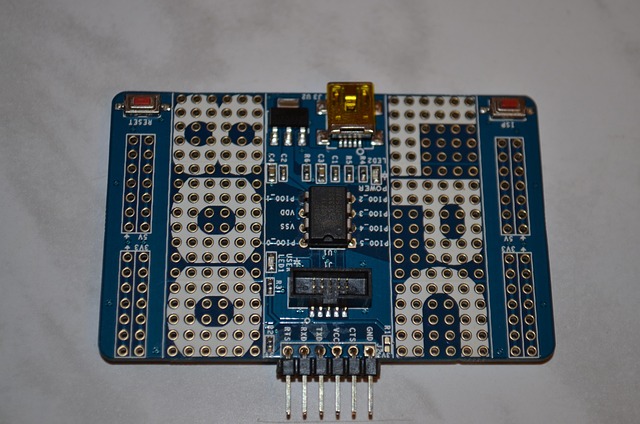
Understanding Firmware: The Backbone of Modern Hardware Systems
In the landscape of modern computing, the term firmware often appears behind the scenes, yet it forms the essential bridge between silicon and software. Firmware is a specialized form of software that is embedded directly into hardware devices, providing low‑level control, initialization, and communication functions. Unlike application software that runs on top of an operating system, firmware operates at a foundational level, allowing hardware components to function predictably and reliably.
What Is Firmware? A Fundamental Definition
Firmware can be described as the permanent or semi‑permanent software stored in non‑volatile memory such as flash or EEPROM. It is tightly coupled with the device’s hardware, offering a set of instructions that guide the device from power‑on to normal operation. Firmware is responsible for tasks such as booting, hardware diagnostics, device configuration, and interfacing with higher‑level operating systems. Because it is written for a specific piece of hardware, firmware is often highly optimized for performance and power consumption.
- Bootloader: Initiates the startup sequence.
- Device drivers: Communicate with the operating system.
- Management firmware: Handles firmware updates and security policies.
The Role of Firmware in the Boot Process
When a computer is powered on, the first set of instructions executed are contained in the firmware. Historically, this role was fulfilled by the Basic Input/Output System (BIOS), a firmware layer that dates back to the early 1980s. Modern systems largely use Unified Extensible Firmware Interface (UEFI), which offers a more flexible, modular architecture. UEFI supports larger storage devices, secure boot mechanisms, and a richer set of configuration options, but at its core it still performs the same bootstrapping tasks.
“Firmware is the unsung hero that turns a pile of silicon into a functional machine.”
BIOS vs. UEFI: A Comparative View
While BIOS is limited to the legacy 16‑bit real‑mode environment and a 1 GB address space, UEFI operates in 32‑bit or 64‑bit mode and can address large storage volumes. UEFI’s modular design allows developers to add new drivers and utilities without rewriting the core firmware. Additionally, UEFI’s Secure Boot feature verifies the integrity of bootloaders, mitigating the risk of rootkits and boot‑kit attacks.
- Legacy Compatibility
- Secure Boot and Authentication
- Extensible Driver Architecture
Firmware Beyond the Motherboard
In modern hardware ecosystems, firmware is not limited to the central processing unit’s motherboard. Nearly every peripheral device—from solid‑state drives (SSDs) and network cards to printers and cameras—contains its own firmware. This embedded firmware governs device behavior, handles firmware upgrades, and maintains consistency with host software. For example, an SSD’s firmware manages wear leveling, garbage collection, and TRIM operations, all of which directly influence the drive’s performance and longevity.
Embedded Firmware in Networking Equipment
Routers, switches, and wireless access points rely heavily on firmware to provide network protocols, security policies, and quality‑of‑service mechanisms. Firmware updates in networking gear can introduce new routing tables, patch vulnerabilities, and optimize packet handling. In many cases, these updates are delivered automatically through over‑the‑air mechanisms, ensuring that devices remain secure without user intervention.
Updating Firmware: Why It Matters
Firmware is often perceived as static, but in reality, updates are critical for security, performance, and feature enhancements. Unlike application software, firmware updates must preserve the integrity of the hardware while ensuring that the update process itself does not render the device inoperable. Manufacturers typically provide firmware update utilities that verify digital signatures, apply patches atomically, and offer rollback options.
Common Firmware Update Methods
- In‑band updates: Executed through the operating system or a dedicated management interface.
- Out‑of‑band updates: Performed via a separate management channel, often used in data centers.
- Embedded recovery partitions: Store a fallback firmware image to restore functionality if an update fails.
Security Implications of Firmware
Firmware represents a unique attack vector. Because firmware operates at a privileged level, a compromise can undermine entire systems. Attackers can embed malicious firmware to bypass operating‑system security, gain persistent access, or exfiltrate data. Consequently, modern systems implement measures such as signed firmware, hardware root‑of‑trust modules, and secure boot to verify the authenticity of firmware before execution.
Hardware Root of Trust
A hardware root of trust is a small, immutable component embedded within the device that verifies firmware signatures and establishes a chain of trust. If the root of trust detects an unauthorized firmware image, it can halt the boot process or boot into a minimal recovery environment. This mechanism is crucial for safeguarding devices in high‑security environments such as aerospace, defense, and critical infrastructure.
The Future of Firmware
As hardware becomes more complex and software demands intensify, firmware is evolving. Modern trends include the adoption of firmware virtualization, where multiple firmware layers coexist on a single chip, and the use of machine‑learning algorithms to optimize firmware performance in real time. Additionally, the rise of edge computing requires firmware to support dynamic reconfiguration, low‑latency responses, and seamless integration with cloud services.
Firmware‑as‑a‑Service
Some vendors are exploring Firmware‑as‑a‑Service (FaaS) models, offering remote firmware updates through secure cloud platforms. This approach allows manufacturers to push continuous improvements, patch vulnerabilities swiftly, and collect telemetry data to inform future firmware iterations. While promising, it introduces new security challenges that require robust encryption, identity management, and audit trails.
Conclusion
Firmware is the silent custodian of modern hardware, orchestrating the harmonious interplay between silicon and software. From bootstrapping the operating system to ensuring secure, reliable operation of peripherals, firmware underpins every layer of the technology stack. Understanding its architecture, update mechanisms, and security considerations is essential for engineers, IT professionals, and even informed consumers. As devices become more interconnected and demanding, firmware will continue to evolve, offering smarter, faster, and more secure foundations for the next generation of hardware systems.


